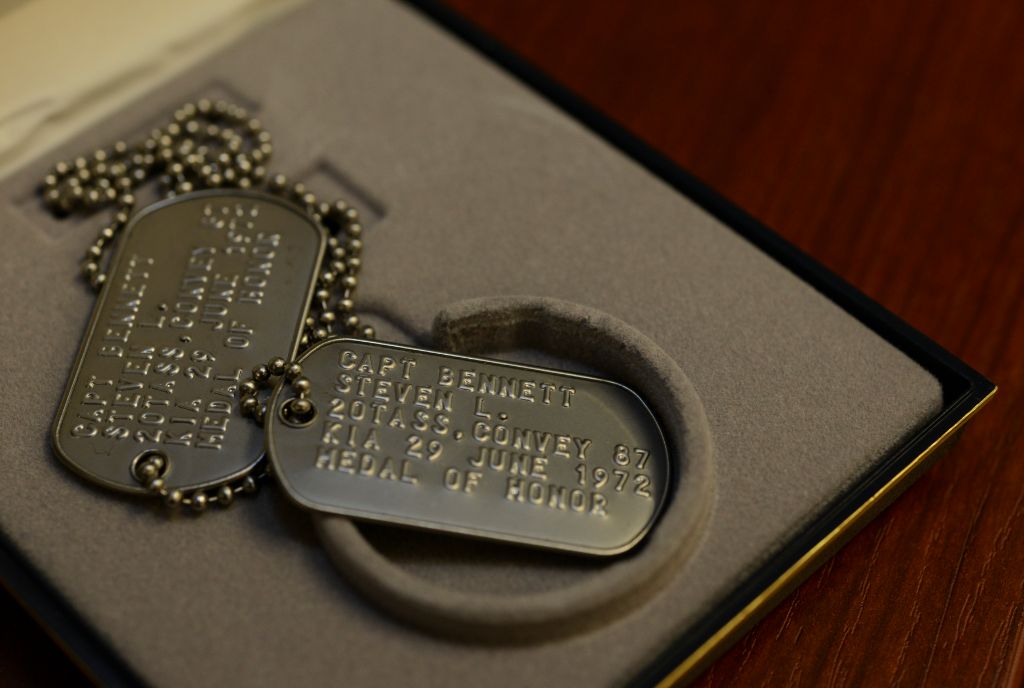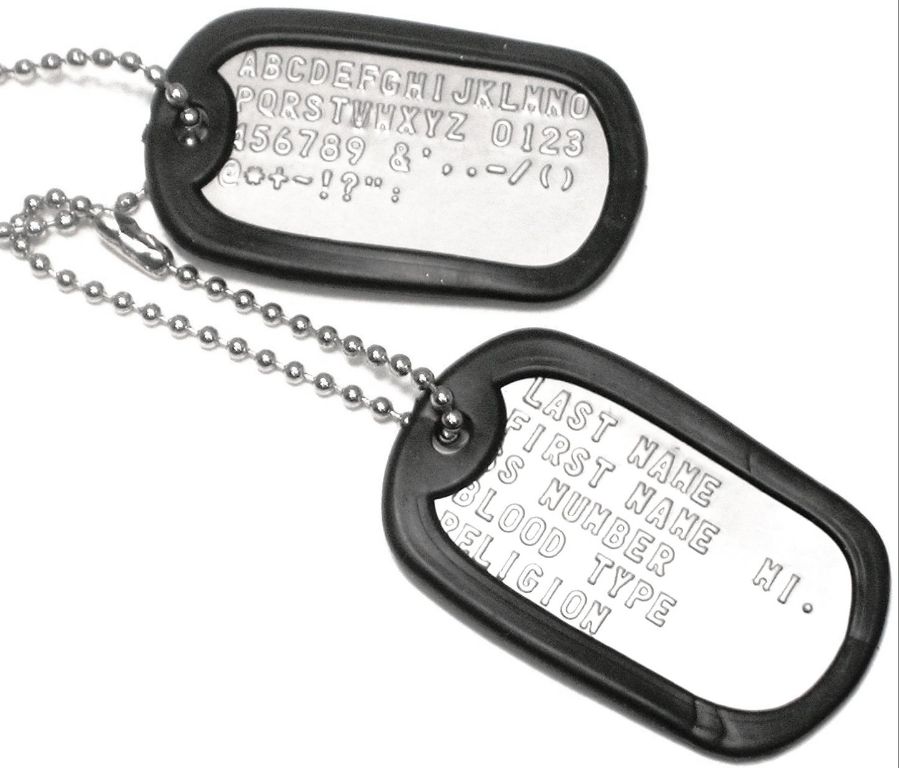Introduction
Military identification tags, commonly known as dog tags, have been an important part of a soldier’s gear for over a century. The tags contain vital information to identify personnel in the event of death on the battlefield. According to an article on the history of military dog tags, the origins of identification discs can be traced back to the Civil War era in the 1860s when some soldiers would pin paper notes with their name and home address to their uniforms (https://www.dogids.com/blog/dog-tags-history/).
This article will provide a brief history of military dog tags, look at when they are issued to soldiers, examine if veterans continue wearing dog tags after service, discuss the tags as collectible items and symbols, overview alternatives for identification, and explore the future of these identification discs.
Purpose of Dog Tags
Military dog tags have served several important purposes throughout history. Most notably, they are used to identify fallen or injured soldiers in combat situations. According to Custom Military Dog Tags, dog tags typically contain a soldier’s name, branch of service, blood type, and religious affiliation. This medical information allows medics to quickly provide proper treatment and avoid dangerous mistakes, especially when a soldier is incapacitated and unable to communicate.
Dog tags also make it possible to identify deceased service members and notify their families. As explained by Military Dog Tags: The Ultimate Guide, matching a soldier’s dog tag details during missions or rescues is the primary way to confirm their identity. The standardization of dog tags emerged during the World Wars as a way to systematically track the fallen when large numbers of casualties made individual identification difficult.
When are Dog Tags Issued?

Dog tags are issued to soldiers and recruits during their initial entry training, which is usually basic training or boot camp. According to this Quora post, soldiers in the U.S. Army receive their dog tags as part of basic training.
Army regulations state that two identification tags are issued to each soldier upon their initial entry on active duty or active duty for training. Soldiers are required to wear the tags at all times while in active federal service or on duty in a field environment, and are encouraged to wear them at other times (source: Army Identification Tags).
The chain holding the dog tags is worn around the neck underneath the uniform. Soldiers must wear the tag marked “religious preference” outwardly so it is visible. The other tag with name and service number faces inward against the chest.
Do Veterans Continue Wearing Dog Tags?
After leaving the military, veterans are not required to continue wearing their dog tags. However, some choose to wear them for various reasons.
For many veterans, their dog tags serve as an ongoing reminder of their military service and time spent in the armed forces. The dog tags represent a significant period in their lives, so continuing to wear them allows veterans to stay connected to that part of their personal history (Source).
In addition, wearing dog tags can provide some practical benefits for veterans. The engraved personal information on dog tags makes them a form of identification that can be useful in emergency situations. Some veterans working high risk jobs, like police, firefighting or private security, choose to wear dog tags on the job for this purpose of identification (Source).
So while not universally practiced, wearing dog tags allows some veterans to maintain a symbolic connection to their military service or provides practical identity information in their civilian lives.
Dog Tags as Symbols
Dog tags have become a powerful symbol of military service and sacrifice. They represent the courage and dedication of soldiers who are willing to make the ultimate sacrifice for their country. In American media and culture, dog tags are often used to indicate that someone is a veteran or currently serving in the military.

Many soldiers view their dog tags as a badge of honor representing their commitment to service. The tags serve as an iconic reminder of the dangers they are willing to face in combat. Some veterans continue to wear their dog tags long after completing their service as a tribute to fallen comrades or to hold on to an important part of their military identity. For families who have lost a loved one in war, dog tags may represent their sacrifice and provide a tangible connection to the deceased soldier.
Beyond the military, dog tags have been featured in films, books, and other media as a shorthand way to identify a character as a member of the armed forces. They evoke ideas like bravery, resilience, and camaraderie among soldiers. The familiar metallic sound of dog tags clinking together is instantly recognizable. When featured in films, books, or games, dog tags quickly convey that military themes and experiences will be central to the story. As an iconic military symbol, dog tags represent the service and sacrifices made by generations of American soldiers.
Collectible Items
Dog tags have become popular collectible items over the years due to their historical interest and significance. Many military enthusiasts and history buffs enjoy collecting actual vintage dog tags from past conflicts. Authentic dog tags from major wars like World War II, Vietnam, and Desert Storm are highly sought after. Beyond actual dog tags, there is a market for replica or customized dog tags sold as memorabilia. Several companies produce replica dog tags modeled after different eras and branches of the military. These are popular souvenirs and gifts. People also buy customized dog tags with their names and information on them as a novelty item. The collecting of dog tags speaks to the cultural status they have achieved as icons of military service and sacrifice.
Alternatives for Identification
While dog tags have traditionally been used for identifying soldiers, new technology has led to alternative methods of identification that are gaining popularity. These can be broadly categorized into wearable IDs and implantable IDs.
Wearable IDs allow soldiers to be identified through devices worn on the body. One example is smart wristbands that contain digital information and can be scanned to pull up the wearer’s details. Other wearable tech includes QR code tattoos that link to online profiles. RFID patches are also being tested as a discreet way for soldiers to be identified via scanners.
Implantable IDs take this a step further by having an identification microchip implanted under the skin, usually in the hand or forearm. This allows the soldier’s information to be read with a scanner even if external identification is lost. The chip uses near field communication and does not have an internal power source. While promising, implantable tech raises concerns around hacking, privacy, and ethics that have limited adoption so far.
While not yet in wide use, these alternatives demonstrate that technology is opening new possibilities for identification on the battlefield. However, it remains to be seen if they will replace or supplement the familiar dog tag in the coming years.
Customized Dog Tags
Many veterans and active duty service members like to customize their dog tags with personal engravings or specialty designs. This allows them to put their own unique stamp on these identifcation tags and make them more meaningful.
Dog tags can be engraved with names, nicknames, dates, inspirational quotes, bible verses, and more. Some popular custom engravings include the service member’s name, branch of service, hometown, and religious affiliation. The engravings allow veterans to make the dog tags their own.

Specialty dog tag designs have also grown in popularity. Companies offer dog tags in a variety of shapes like crossed rifles, eagles, or various state outlines. The tags can be color filled with black, red, blue or other colors for additional customization. There are military themed dog tags featuring camouflage patterns or patriotic symbols. Veterans enjoy expressing themselves through these customized designs.[Custom Military Dog Tags | Made In The USA]
The Future of Dog Tags
As technology advances, there is speculation about whether physical dog tags will eventually be phased out in favor of digital identification methods. Some recent developments indicate this could be the case:
The U.S. Army has introduced a “smart tag” that contains electronic sensors to monitor a soldier’s condition and location in real time. While not fully replacing traditional dog tags yet, this shows a shift towards integrating more technology for identification and monitoring purposes.
There are also early trials of digital dog tags – QR code tags that link to a cloud database with the soldier’s information. This allows quick access to medical data if a soldier is injured and can’t communicate. Digital dog tags could supplement or someday replace the standard engraved metal tags.

However, there are advantages of the classic physical dog tag that may mean they won’t ever fully go away. The metal tags are durable, permanent, and don’t require electricity. Many soldiers are fond of their tags for sentimental reasons as well. The future may bring a convergence of both physical and digital identification on the battlefield.
Conclusion
Dog tags remain an important part of military culture and tradition. While they were originally created to provide identification of deceased soldiers in war zones, they have taken on additional meaning over time.
Active duty service members are required to wear dog tags at all times during their service. The two tag design allows one tag to remain with the deceased soldier while the other accompanies the body for identification.
Once military service ends, the choice to continue wearing dog tags becomes a personal one. Many veterans opt to put away their dog tags, though some choose to wear them occasionally as a connection to their service. Others display them in shadow boxes or pass them down to family members.
In recent decades, dog tags have also become collectible items for military enthusiasts. They are sold as souvenirs or customized with engravings for gifts. The variety of uses and meanings associated with dog tags speak to their enduring legacy.
While alternatives like embedded microchips exist, the dog tag remains an iconic part of military culture, both during and after service. They represent the unbreakable bond between soldiers and their units. The sight of dog tags around one’s neck continues to symbolize the courage and sacrifice of those who serve their country in uniform.